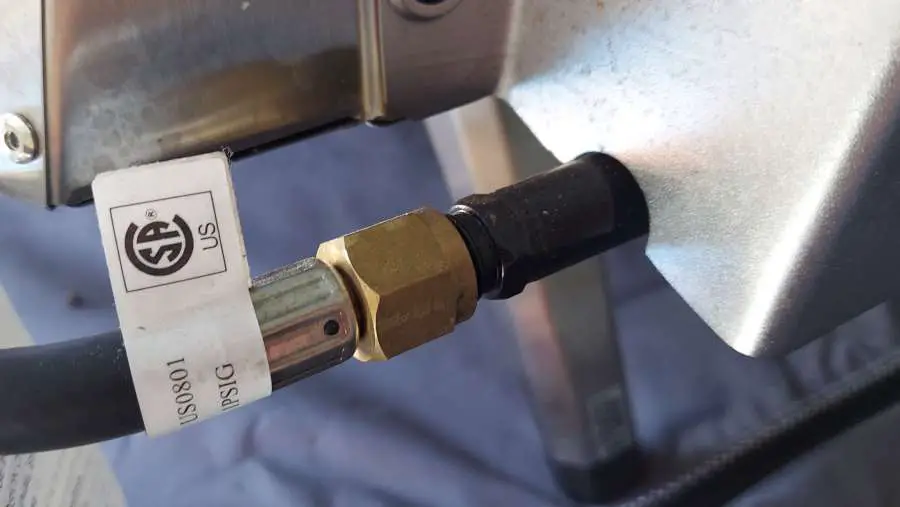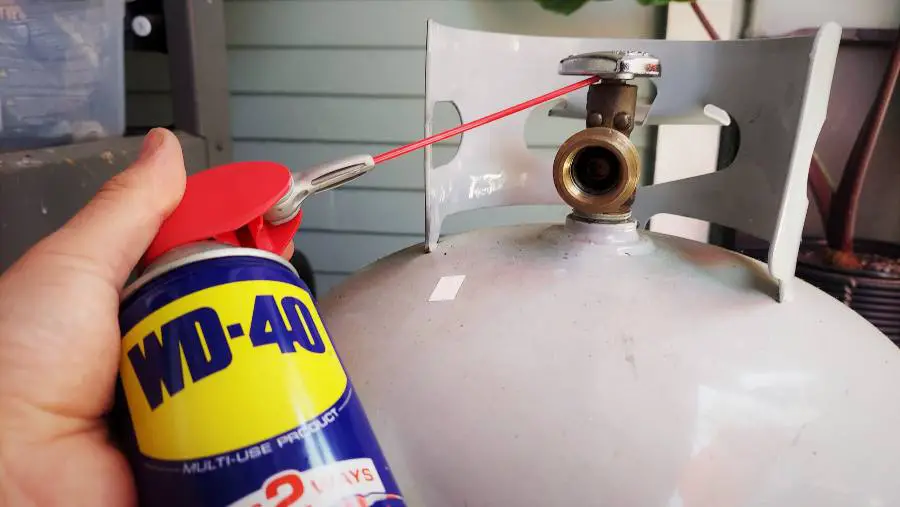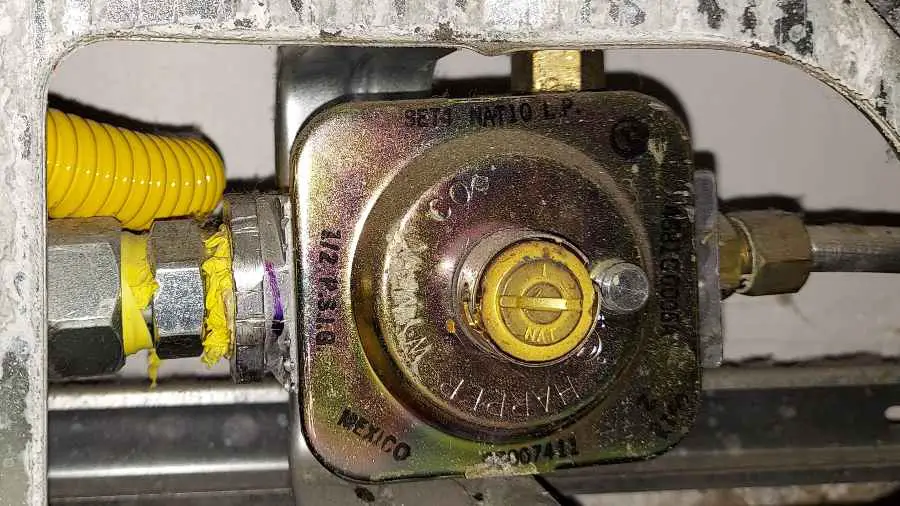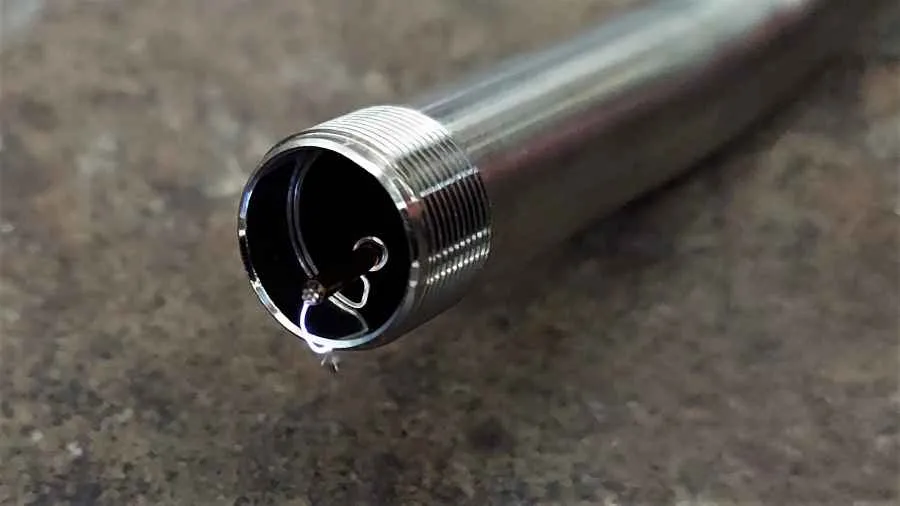Last Updated on May 23, 2024 by Dan Campbell
Propane is one of the most common gases you’ll find available to use, and since propane torches burn at around 2,000°C or 3,600°F they are extremely versatile. Not only can you use propane torches to start fires or use them in the kitchen, but because of their high heat, you can even solder, cut metal, and braze metals together. Welding is typically not recommended with propane torches however, as it produces a brittle and weak weld when compared to oxy-acetylene.
Depending on what you are trying to achieve, you might find another gas more appropriate for your needs. Some other gases to consider are butane, MAP-Pro, and acetylene. While each of these can be purchased relatively easily, some may require more specialized equipment to work and may not be suitable for your needs.
What Temperature Does A Propane Torch Burn At?
Propane torches burn at roughly 2,000°C or 3,600°F with ambient air. If mixed with oxygen to create an oxy-propane torch, temperatures can reach as high as 2,800°C or 5,100°F.
How Long Does A Handheld Propane Torch Last?
A typical handheld propane torch last will last 1.5 hrs with a standard 14oz propane bottle. A typical Bernzomatic 14oz propane bottle contains roughly 0.9 lbs of propane, and a typical Bernzomatic torch has around 13,000 BTU/hr output. However, because you are typically not using the torch at its maximum setting, they can last closer to 4 hours of continuous use at a lower setting. Utilizing a larger tank with a hose connection you can use the torch a lot longer.
See my article on how long propane tanks last to see how long you could run your propane torch for, as well as how to determine how full your tank is. That post also has a calculator where you can enter any propane tank size and BTU output to determine how long it will last for you.
Common Fuels for Gas Torches
The most common types of gas you’ll come across for torches as I mentioned above are going to be propane, butane, MAP-Pro, and acetylene. Depending on what task you are working on, you might choose one over the other, as each has their own pros and cons. Let’s go over some details about each one below.
Propane
Propane is the most common and readily available gas. You can find it being used for heating homes, fueling BBQs, providing power to generators, and many other applications.
Propane burns at around 2,000°C or 3,600°F, except when oxygen-fed, where it can reach temperatures upwards of 2,800°C or 5,100°F. Propane contains around 2,500 BTU per cubic foot, giving it one of the highest BTU outputs per volume when compared to other common fuel types. It is also one of the least expensive fuel types, making it a great choice for everyday jobs.
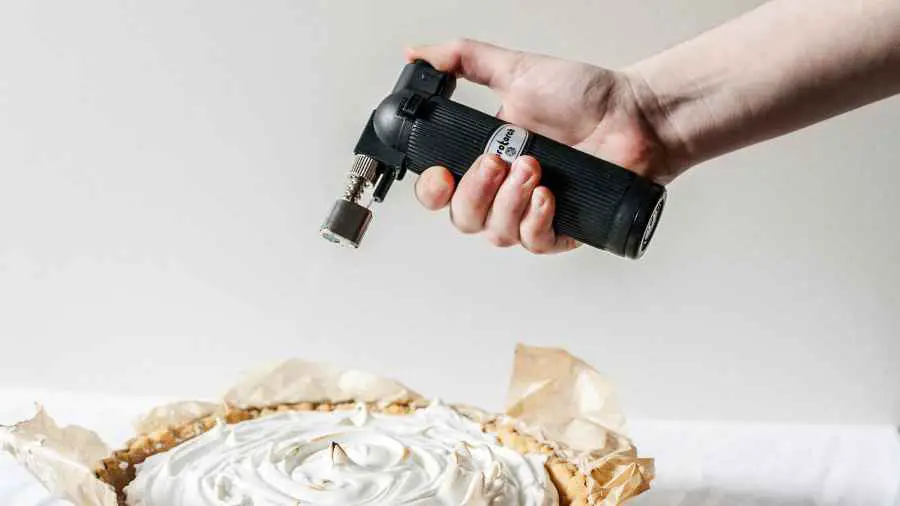
Butane
Butane, similar to propane, is one of the most common and readily available gasses you can find, however, it is typically only used for smaller applications and is usually only connected to micro flame torches or small, portable camp stoves.
Butane burns at 1700°C or 3,100°F, making it the least ideal for heating items up. But if you just need something to start a fire with or for soldering, this will work perfectly. Because butane is usually used with more precise flames, it is also ideal for smaller jobs like soldering and shrink tubing wire.
MAP-Pro (Not MAPP)
MAP-Pro gas is another common gas available but is usually only found at hardware stores, and is not used for residential heating or other energy production systems like propane. MAP-Pro should not be confused with MAPP gas, which is not commonly available anymore.
MAP-Pro is a mixture of propylene and propane and burns at around 2,100°C or 3,800°F in ambient air, and at roughly 3,000°C or 5,400°F when combined with oxygen.
While it may only burn ~100°C hotter than propane, it has a much higher rate of heat transfer, meaning it can get metal hotter much quicker than propane would in the same amount of time. MAP-Pro is great for jobs that require high heat and high intensity. However, due to its cost, propane may be a better option as it outputs a similar amount of heat, but at a lower BTU, roughly 10% lower.
Acetylene & Oxy-Acetylene
Acetylene is the least common gas available compared to these others and is only used in specific situations where you need extreme heat, such as welding or cutting metal. Roughly 20% of all acetylene produced is used for industrial welding and cutting.

Acetylene burns at a temperature of 2,200°C or 4,000°F, and when combined with an oxygen tank to produce oxy-acetylene can reach temperatures as high as 3,300°C or 6,000°F, making it the hottest commonly available gas.
Oxy-acetylene is commonly used for welding and cutting steel, however, air-fed acetylene torches are not and are typically used for jobs similar to that of a propane or oxy-propane setup. Some may prefer using acetylene in enclosed spaces, such as crawl spaces, since acetylene is lighter than air whereas propane is denser than air.
Acetylene is most commonly found as an oxy-acetylene configuration where the oxygen and acetylene mixtures are changed depending on the job being performed.
MAPP vs Map Pro
MAPP (methylacetylene-propadiene propane) is no longer produced, as the last plant in North America that manufactured it stopped production in early 2008. Its replacement, Map-Pro gas is slightly similar, however, it does not have the same chemical composition.
It can be confusing that both fuels start with MAP, as MAP-Pro is essentially a very different mixture, and does not share the same qualities as MAPP gas. MAPP gas was widely used as an alternative to Acetylene as it burned much higher than propane, but less than Acetylene torches, whereas MAP-Pro only produces around 10% more BTUs than propane, and 14% less than that of MAPP.
What Temperature Do Other Fuels Burn At?
Below is a chart that shows the temperature at which different fuels burn at. I have included both the ambient air temperature as well as the oxygen-fed temperature, where applicable.
| Fuel Type | Air | Oxygen-fed |
| Butane | 1,700°C | 3,100°F | N/A |
| Propane | 2,000°C | 3,600°F | 2,800°C | 5,100°F |
| MAP-Pro | 2,100°C | 3,800°F | 3,000°C | 5,400°F |
| Acetylene | 2,200°C | 4,000°F | 3,300°C | 6,000°F |
What Can Propane Torches Melt?
Depending if the torch is using an oxygen-fed system, propane torches can range from 1,900°C-2,800°C and can melt just about all metals. However, just because the highest temperature of an oxy-propane torch may be 2,800°C does not mean it can melt metals with a melting point below that, as there are many factors involved, such as the thickness of the metal, the torch being used, and the type of tip. Because metals disperse heat quickly, the propane torch needs to create more heat than can be dispersed, as well as stay above the melting temperature.
Below are some of the metals that can easily be melted by propane torches, however, the higher the melting point, the easier it will be to melt with an oxy-propane torch. Any metal that has a melting point above 1,100°C will be a lot easier to melt with an oxy-propane torch or an oxy-acetylene torch.
List of Metal Melting Temperatures
| Metal | Celsius (°C) | Fahrenheit (°F) |
| Tin | 230°C | 450°F |
| Bismuth | 270°C | 500°F |
| Zinc | 420°C | 800°F |
| Aluminum | 660°C | 1,200°F |
| Brass | 900°C | 1,700°F |
| Silver | 1,000°C | 1,800°F |
| Bronze | 1,000°C | 1,900°F |
| Gold | 1100°C | 1,900°F |
| Copper | 1100°C | 2,000°F |
| Cast Iron | 1,200°C | 2,200°F |
| Carbon Steel | 1,400°C | 2,500°F |
| Nickel | 1,500°C | 2,700°F |
| Wrought Iron | 1,500°C | 2,700°F |

